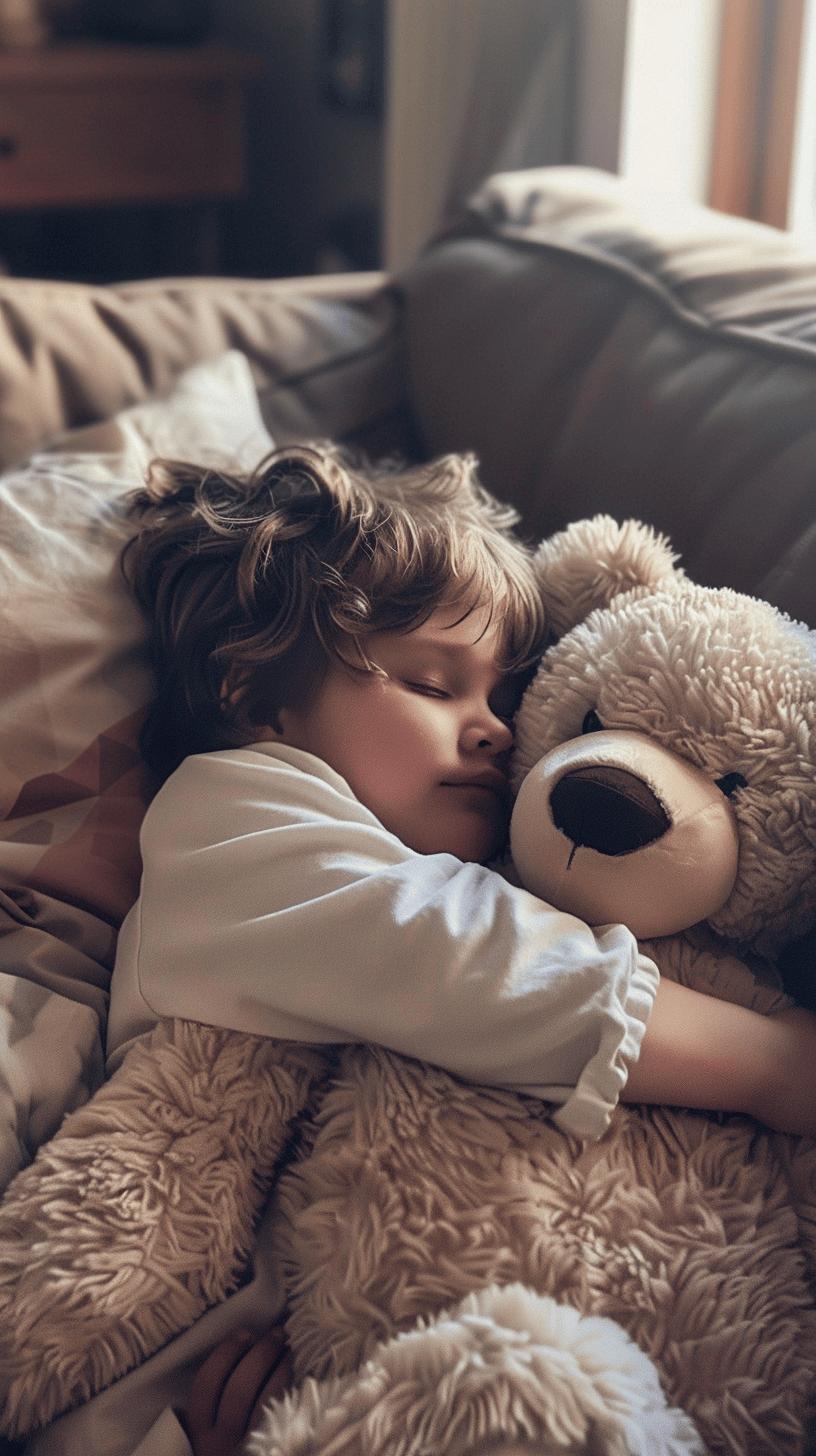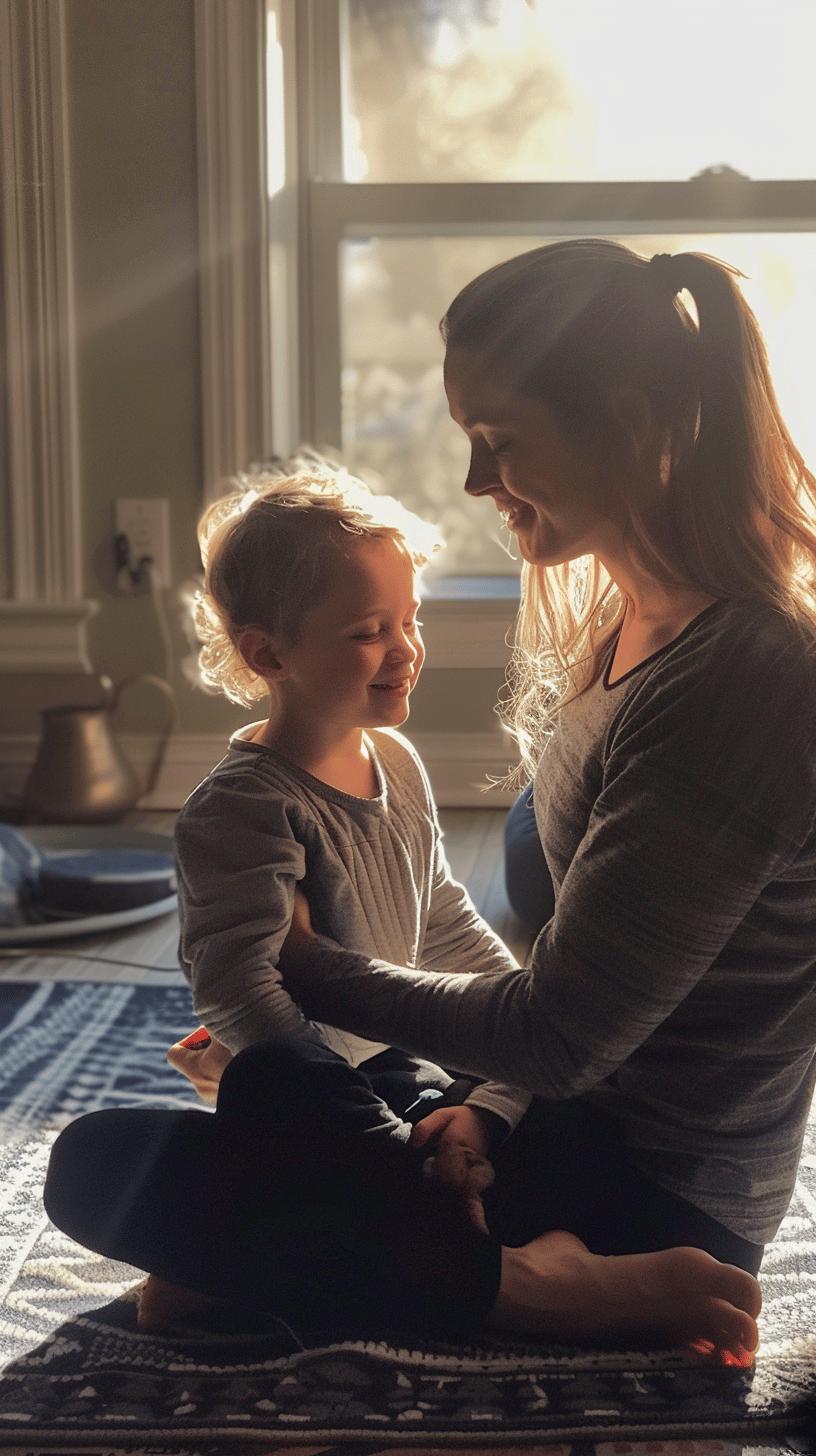5 Strategies for Teaching Kids Emotional Regulation
Ever wonder why your child’s meltdown feels like a mini tornado tearing through the peaceful home you’ve worked so hard to create?
You're not alone.
Teaching emotional regulation to kids can feel like an uphill battle, but it doesn’t have to be.
By exploring five simple, yet effective strategies, you'll find ways to help your child understand and manage their emotions better.
Trust me, the benefits are well worth it.
Teaching Kids to Identify and Label Emotions
Recognizing emotions is crucial for kids because it lays the foundation for emotional regulation. When children can identify and label their feelings, they're better equipped to manage them. This skill not only enhances their self-awareness but also improves their social interactions.
One effective way to teach kids to identify and label emotions is by discussing emotions openly. Use examples from daily life, books, TV shows, and real-life situations to illustrate different feelings. Label emotions explicitly to help kids understand and articulate what they're experiencing. For instance, if a child looks upset after losing a game, you can say, "It seems like you're feeling disappointed because you didn't win." This helps them connect the feeling with the situation.
Here are 5 practical activities or tools to help children identify emotions:
- Emotion Charts: Use charts with different faces showing various emotions. Kids can point to the face that matches their current feeling.
- Storytelling: Read books or watch TV shows and pause to discuss how characters might be feeling and why.
- Emotion Flashcards: Use flashcards with pictures and names of emotions. Ask kids to pick a card that matches their current mood.
- Role-playing: Act out different scenarios and ask kids to express how they would feel in each situation.
- Feeling Journals: Encourage kids to draw or write about their feelings daily.
By incorporating these practices, children become more adept at identifying and expressing their emotions, leading to better emotional health and stronger social skills.
Techniques for Teaching Emotional Self-Regulation

Teaching kids self-regulation is crucial because it helps them recognize, manage, and appropriately display their emotions. This skill not only aids in managing big emotions, but also boosts self-esteem, reduces shame and anxiety, and improves social interactions.
One effective method is establishing consistent routines. Children thrive on predictability, and routines can provide a sense of security and stability. Calm-down strategies are another essential tool. Techniques like deep breathing, counting to ten, or using a quiet corner can help children regain control when emotions run high. Encouraging children to express their feelings openly is also vital. When kids talk about their emotions, it helps them process what they're experiencing and reduces emotional intensity. Positive adult interactions, like modeling calm behavior and offering reassurance, further support a child's ability to self-regulate.
| Technique | Description | Benefits |
|---|---|---|
| Consistent Routines | Establish daily routines for meals, bedtime, and playtime | Provides stability and security |
| Calm-Down Strategies | Use deep breathing, counting, or quiet corners | Helps manage big emotions |
| Expressing Feelings | Encourage open discussion about emotions | Reduces emotional intensity |
| Positive Adult Interactions | Model calm behavior and reassure the child | Supports emotional development |
| Emotion Labeling | Help children identify and name their emotions | Increases emotional awareness |
Teaching these self-regulation techniques can have a long-lasting positive impact. Children who learn to manage their emotions effectively are better equipped to handle stress, build healthy relationships, and navigate social situations with confidence. This foundation helps them grow into emotionally resilient adults.
Activities for Teaching Kids Emotional Regulation
Engaging activities play a crucial role in teaching kids how to regulate their emotions. By incorporating fun and interactive tasks, children can learn to identify, understand, and manage their feelings in a healthy way.
Sensory bottles are a fantastic tool for creating a calming visual experience. These bottles, filled with water, glitter, and small objects, can captivate a child's attention and help them focus on something steady when they feel overwhelmed. Another great activity is music-inspired art. By drawing or painting while listening to music, kids can channel their emotions into their artwork, aiding in both identification and expression of their feelings.
Dragon breathing is another effective technique to help children control anger. By teaching them to take deep breaths in and exhale slowly like a dragon breathing fire, kids can calm themselves down during moments of intense emotion. Blowing bubbles serves a similar purpose; it regulates breathing and provides a fun way to practice deep breaths. Identifying character emotions through movies and TV shows is also beneficial. Pausing to discuss how characters might be feeling helps children make connections between situations and emotions, enhancing their emotional awareness.
Mindfulness Activities
Mindfulness activities can significantly reduce stress and improve attention in children. Guided meditation is one excellent example. Using simple, child-friendly meditation guides, kids can learn to focus their thoughts and relax their minds.
Books on mindfulness also provide valuable lessons. Stories that incorporate mindful breathing, body scans, or calming techniques can make these practices accessible and relatable. Reading these books together can reinforce the concepts and make mindfulness a fun part of the daily routine.
Creative Expression Activities
Creative expression activities like music-inspired art can help children express and manage their emotions. By letting kids draw or paint while listening to different types of music, they can explore how various sounds make them feel and use art as an outlet for emotional expression.
Toilet paper roll puppets are another fantastic tool. Kids can create puppets and use them to act out feelings and scenarios, which encourages them to express their emotions in a playful and engaging way. This activity not only helps with emotional regulation but also enhances creativity and communication skills.
Role of Parents and Educators in Emotional Regulation

Parents and educators often worry about how well children can manage their emotions. It's completely natural to feel this way because emotional regulation is a crucial skill that affects a child's overall well-being and social interactions. When kids struggle to regulate their emotions, it can lead to challenges both at home and in the classroom, making it essential to address these concerns early on.
One of the most effective ways to teach emotional regulation is by modeling it yourself. Kids learn a lot by observing the adults around them, so showing them how to handle emotions calmly and effectively can make a big difference. Consistent routines are another key strategy. When children know what to expect, it reduces anxiety and provides a sense of security. Positive adult interactions, like offering reassurance and listening attentively, also support a child's emotional development. Tools like calm-down cards and affirmation cards can help kids manage their feelings in the moment, while activity books can make learning about emotions more engaging.
Here are 5 practical tools or resources for parents and educators to support emotional regulation:
- Calm-Down Cards: These cards offer simple techniques like deep breathing or counting to ten to help kids calm down.
- Affirmation Cards: Positive statements that kids can repeat to themselves to build self-esteem and reduce negative feelings.
- Activity Books: Books filled with exercises and games focused on understanding and managing emotions.
- Emotion Wheels: Visual aids that help children identify and articulate their feelings.
- Routine Charts: Daily schedules that provide a sense of predictability and stability.
By implementing these strategies, parents and educators can significantly impact a child's ability to regulate their emotions. This foundation helps kids not only manage their feelings better but also fosters a more positive and supportive environment at home and in the classroom.
Coping Skills and Calming Techniques for Kids
Helping kids develop coping skills and calming techniques is essential for managing their emotions effectively. When children learn how to handle stress and big emotions, they are better equipped to navigate daily challenges and build healthier relationships.
Modeling effective strategies is a crucial part of teaching coping skills. Kids often imitate the adults around them, so demonstrating calm behavior during stressful situations can make a significant impact. Encouraging children to discover their own coping mechanisms is also important. This could be anything from drawing to playing with a favorite toy, as long as it helps them feel better.
Calming techniques are another valuable tool for managing emotions. Deep breathing exercises, for example, can help children relax and regain control when they feel overwhelmed. Sensory activities like playing with kinetic sand or using a stress ball provide a tactile way to release tension. Consistent routines give kids a sense of predictability and stability, which can reduce anxiety and make it easier for them to manage their emotions.
- Deep Breathing: Teach kids to take slow, deep breaths to calm themselves.
- Sensory Play: Use kinetic sand, stress balls, or slime to help kids focus and relax.
- Visualization: Encourage kids to close their eyes and imagine a peaceful place.
- Physical Activity: Exercise or play outside to release built-up energy and stress.
- Quiet Time: Create a quiet, cozy space where kids can go to calm down.
- Routine Charts: Use daily schedules to provide predictability and reduce anxiety.
Incorporating these practices can make a significant difference in a child's ability to manage their emotions. By learning and using these techniques, kids can better handle stress, reduce emotional outbursts, and develop stronger emotional resilience.
Encouraging Emotional Reflection and Expression

Encouraging children to express their emotions is essential to prevent emotional outbursts and foster healthy emotional development. When kids feel safe sharing their feelings, they become more self-aware and better equipped to manage their emotions. This openness also builds a foundation for empathy and kindness, as children learn to understand and relate to others' emotions.
One effective strategy is engaging children in activities that promote emotional reflection and expression. Journaling is a fantastic tool for this purpose. By writing or drawing about their feelings, kids can process their emotions in a structured way. Role-playing different scenarios allows children to practice expressing their emotions and understanding others' perspectives. Art is another powerful medium for emotional expression. Whether it's drawing, painting, or crafting, creative activities give kids a non-verbal outlet to explore and communicate their feelings.
- Journaling: Encourage kids to write or draw about their feelings daily.
- Role-playing: Act out various scenarios to help kids practice expressing emotions.
- Art Projects: Use drawing, painting, or crafting as outlets for emotional expression.
- Emotion Thermometer: A visual tool to help children indicate their emotional intensity.
- Empathy Games: Play games that involve recognizing and discussing feelings in different situations.
By incorporating these strategies, children can better understand and articulate their emotions. This not only helps them manage their feelings more effectively but also fosters a deeper sense of empathy and kindness towards others.
Final Words
Helping kids identify, label, and regulate their emotions sets the stage for emotional growth. From openly discussing feelings to creative expression activities, the strategies outlined can make a big difference. Remember, every small step counts in teaching kids emotional regulation. Keep supporting their journey with patience and love.
FAQ
How to help a child regulate their emotions?
Helping a child regulate their emotions involves teaching them to recognize and appropriately manage their emotional responses. Strategies include using consistent routines, calm-down techniques, and positive adult interactions to model and support effective emotional regulation.
Emotional regulation strategies for students?
To foster emotional regulation in students, use techniques like creating consistent routines, teaching calm-down strategies, encouraging expression of feelings, and providing positive reinforcement from educators and parents. These methods enhance students' emotional management skills.
How to calm a dysregulated child?
To calm a dysregulated child, use techniques like deep breathing exercises, sensory activities, and establishing a calm environment. Encourage them to express their feelings and provide a safe space for them to regain control.
What is emotional regulation in child development?
Emotional regulation in child development is the ability to recognize, manage, and appropriately express emotions. It is crucial for social interactions, self-esteem, and reducing anxiety, helping children navigate the world more effectively.
Emotional regulation activities for kids?
Effective emotional regulation activities for kids include sensory bottles, music-inspired art, deep breathing exercises like dragon breathing, and mindfulness practices. These activities help children identify and manage their emotions in a fun and engaging way.
Play therapy activities for emotional regulation?
Play therapy activities for emotional regulation involve using toys, games, and creative tasks to help children express and manage their emotions. Examples include role-playing, puppet shows, and art projects that prompt emotional expression.
Teaching emotional regulation skills PDF?
To effectively teach emotional regulation skills, use resources like visual aids, structured activities, and calm-down techniques. Consistently reinforcing these skills through daily practice and positive adult interactions is key for development.
Emotional regulation skills for child PDF?
Developing emotional regulation skills requires structured activities like deep breathing, mindfulness, and arts and crafts that promote emotional expression. Consistent routines and supportive environments enhance these skills.







